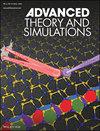Performance Analysis of SPR Sensor Based on Tin Di-selenide, Silicon and Lead Titanate for Malaria Detection
IF 2.9
4区 工程技术
Q1 MULTIDISCIPLINARY SCIENCES
引用次数: 0
Abstract
This paper introduces the design of a high-performance Surface Plasmon Resonance (SPR) sensor using a SnSe2/Si/PbTiO3 heterostructure for detecting malaria, targeting the different stages of the plasmodium parasite lifecycle. The Tin di-selenide (SnSe2) with high refractive index (RI) and excellent absorption property in visible and infrared regions allows efficient interaction with the evanescent field, thereby increasing sensitivity for small RI changes near the surface. The strategic integration of lead titanate (PbTiO3), known for its high RI and tunable bandgap, with SnSe2 and Silicon (Si) layers, the proposed sensor design (FK51A-prism/Ag/SnSe2/Si/PbTiO3/Sensing-Medium) significantly improves sensitivity to 390.41°/RIU for the ring stage of malaria. The Kretschmann configuration, in conjunction with the Transfer Matrix Method (TMM) and angular interrogation, has been utilized to optimize the performance of the proposed SPR sensor. The proposed design achieves an optimal Quality Factor (QF) of 130.92 RIU⁻¹, enabling the detection of small changes in RI. With a Detection Accuracy (DA) of 0.33 deg−1 for the ring stage, the proposed SPR sensor demonstrates its potential for early and accurate malaria diagnosis. Also, the enhanced DA and QF in later stages (trophozoite and schizont stages) offers broad detection range of the proposed SPR design. The design offers a promising application across different biomedical applications.

基于二硒化锡、硅和钛酸铅的SPR疟疾检测传感器性能分析
本文介绍了一种基于SnSe2/Si/PbTiO3异质结构的高性能表面等离子体共振(SPR)传感器的设计,用于检测疟疾,针对疟原虫生命周期的不同阶段。二硒化锡(SnSe2)具有高折射率(RI)和优异的可见光和红外吸收特性,可以有效地与倏逝场相互作用,从而提高了对表面附近微小的RI变化的灵敏度。该传感器设计(fk51a棱镜/Ag/SnSe2/Si/PbTiO3/Sensing-Medium)将具有高RI和可调带隙的钛酸铅(PbTiO3)与SnSe2和硅(Si)层战略性集成,显著提高了疟疾环阶段的灵敏度,达到390.41°/RIU。Kretschmann配置,结合传递矩阵法(TMM)和角度询问,已被用于优化所提出的SPR传感器的性能。所提出的设计达到了130.92 RIU - 1的最佳质量因子(QF),能够检测到RI的微小变化。SPR传感器在环阶段的检测精度(DA)为0.33°−1,显示了其在疟疾早期和准确诊断方面的潜力。此外,后期阶段(滋养体和分裂体阶段)增强的DA和QF为所提出的SPR设计提供了更广泛的检测范围。该设计在不同的生物医学应用中提供了一个有前途的应用。
本文章由计算机程序翻译,如有差异,请以英文原文为准。
求助全文
约1分钟内获得全文
求助全文
来源期刊

Advanced Theory and Simulations
Multidisciplinary-Multidisciplinary
CiteScore
5.50
自引率
3.00%
发文量
221
期刊介绍:
Advanced Theory and Simulations is an interdisciplinary, international, English-language journal that publishes high-quality scientific results focusing on the development and application of theoretical methods, modeling and simulation approaches in all natural science and medicine areas, including:
materials, chemistry, condensed matter physics
engineering, energy
life science, biology, medicine
atmospheric/environmental science, climate science
planetary science, astronomy, cosmology
method development, numerical methods, statistics
 求助内容:
求助内容: 应助结果提醒方式:
应助结果提醒方式:


